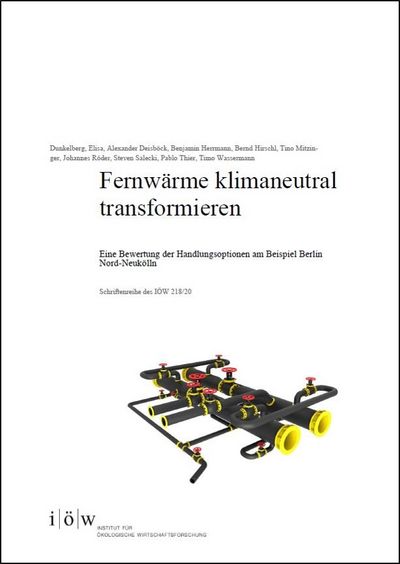District heating: the way towards carbon neutrality An assessment of the options for action using the example of Berlin North Neukölln
District heating in Berlin, like in many other cities, makes a significant contribution to the heat supply – in the capital of Germany, 40% of the apartments use district heating. Since fossil fuels are predominantly used as an energy source in district heating, district heating has to undergo a transformation in order to meet the climate protection and coal phase-out goals of the state of Berlin.
Based on analysis of the development of heat demand and the potential of renewable heat and waste heat in the North of Berlin Neukölln, the study shows different options for the district heating there. A transformation path for district heating can be derived from the heat generation costs and CO2eq emissions. The first phase focuses on the coal phase-out, the expansion of gas-based CHP and PtH, the integration of waste heat and the implementation of pilot plants for the integration of wastewater and river water heat as well as deep geothermal energy. The second phase encompasses the comprehensive integration of the local heat sources wastewater, river water, solar thermal and geothermal energy as well as the substitution of natural gas by synthetic gas.
For the integration of the local heat sources, new cooperation between different actors and companies will become more important in the future - and the approval processes will also change. The state of Berlin should advance the transformation process with measures such as the promotion of pilot plants and a supportive attitude in the approval processes.



